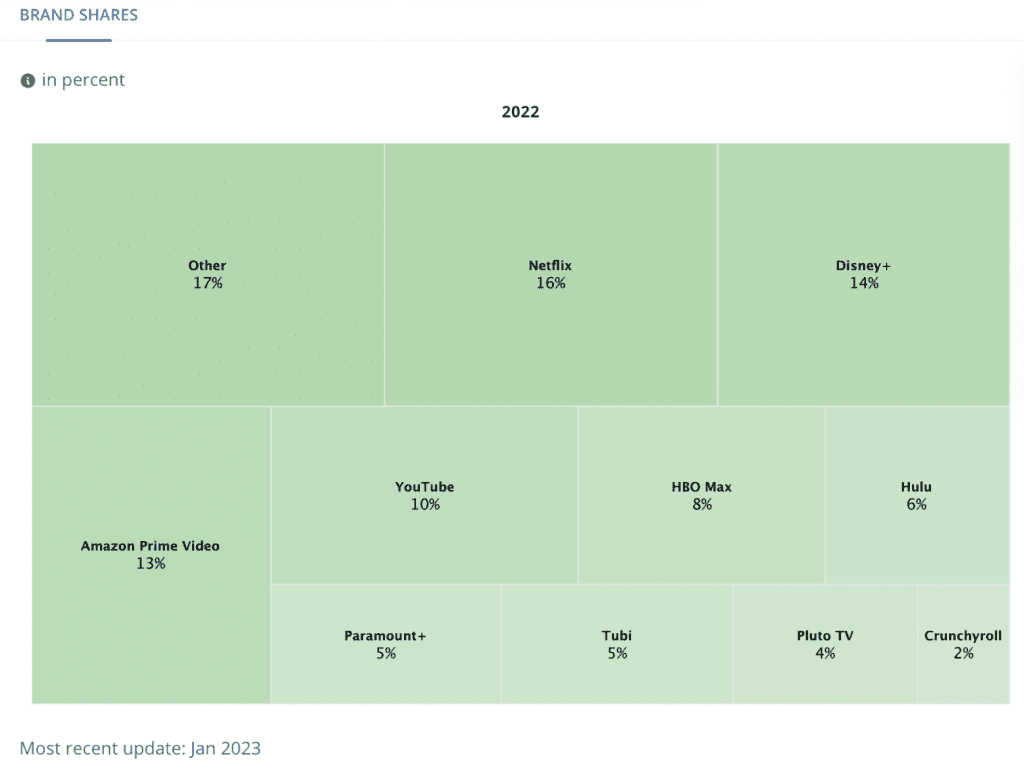The streaming wars reflect the plot of Infinity War (or Star Wars… it’s not a perfect metaphor). The growth of over-the-top television (OTT) continues unabated.
The number of OTT users across Netflix, Disney+, HBO Max, Hulu, and other platforms is expected to reach 4.2b by 2027.

Connected TVs (CTV) are seemingly more commonplace than toasters. As of February 2022, there were around 117mm CTV households in the U.S.
This leaves advertisers and media brands asking: Where are programmatic ads headed?
Programmatic advertising is certainly in the cards for brands, both large and small. And programmatic TV advertising continues to make headlines and big promises.
But one thing is certain: The popularity of ads across streaming services is growing as the industry figures out measurement, inventory and growth.
By 2026, ad revenue is projected to surpass $32b.

How OTT Is Shaping Programmatic Ad Tech
With the streaming giants’ rapid expansion — fueled by Silicon Valley’s mantra of ‘move fast and break things’ — ad tech had difficulty keeping up with the shift from traditional TV to OTT.
Programmatic advertising fits individual web properties and Internet-native video platforms. A native ad on a publisher’s site feels natural. So do ads across major social media platforms, including Facebook, Instagram and Snapchat.
But applying the same ad tech to OTT (particularly with live programming) proved difficult.
“Early adopters are finding that pairing digital data with connected TV and OTT ads isn’t a simple plug-and-play exercise,” wrote eMarketer’s editorial board. “Those hoping to benchmark connected TV and OTT performance against standard digital video advertising metrics are also finding this a complex task.”
Programmatic advertisers in OTT have faced the unique challenge of translating the metrics of traditional TV and data-driving digital ads.
According to a 2022 survey, 48% of respondents said measuring incremental reach across streaming platforms and publishers was challenging for CTV advertising. Meanwhile, 43% pointed to managing ad frequency across platforms and publishers as a hurdle.
But the challenges don’t end there.
Another survey found that 85% of respondents said they were “very” or “somewhat concerned” over ad fraud.
Buying digital ad space for OTT and CTV is still difficult, but more laser-focused DSPs have popped up to support the demand.
“Comcast-owned FreeWheel is introducing a one-stop shop for buying commercials in these emerging forms of TV,” writes Jeanine Poggi at AdAge. “The suite of new ad products will allow buyers to access inventory from FreeWheel’s clients, which include more than 60 of some of the top TV networks and publishers that are being served on platforms like Roku, Amazon Fire, Google Chromecast and Apple TV, among others.”
Similarly, Adobe acquired TubeMogul, a DSP aimed directly at programmatic video.
The Trade Desk, one of the world’s most popular DSPs, has also invested in CTV advertising.
TTD’s solution not only helps advertisers “maximize reach to increasingly digital audiences, wherever they’re watching,” but the company’s relationships with top networks and content providers give it an edge.
TTD also positions itself as an “all-in-one” DSP, which gives advertisers a more streamlined way to scale their CTV ads across inventory, including video, audio, native, and OOH.
It’s DSPs like these that will allow programmatic video ads built for CTV and OTT to scale in a meaningful way.
Specialized DSPs Are Expanding Opportunities for Programmatic
But that doesn’t mean it’s suddenly a straightforward affair.
Tal Mor is the CTO of Tremor Video, a DSP purportedly meeting these new demands. “Just because programmatic video is everywhere doesn’t mean it’s easy,” writes Mor. He says that programmatic video — and especially Connected TV or OTT — requires the right balance of ad tech to prove effective: “It requires access to the right audiences, unique targeting abilities, channel-specific inventory, reporting/optimization abilities, and fraud detection/prevention methods.” To drive this home, Mor writes that the lack of industry standards makes it particularly difficult to navigate the nuanced space.
That said, movement in OTT services is driving growth in programmatic video ad spend.
Automation and measurement are improving.
For example, DoubleVerify launched a solution that can verify a CTV ad’s viewability, allowing advertisers to determine if an ad was actually seen. The launch marks the first viewability measurement solution to hit the market.
“As CTV impressions continue to be sold at a premium, brands need insight into which platforms and environments offer the best viewability rates,” said DoubleVerify CEO Mark Zagorski. “To that end, we’re excited to launch this first-of-its-kind solution and continue to lead in measurement and innovation for CTV buyers.”
Targeting is getting more precise.
Ad formats are innovating.
Case and point: Samsung Ads is tapping into Clinch’s ad tech platform to “deliver personalized and dynamic programmatic campaigns across FAST service Samsung TV Plus.”
Clinch CEO Oz Etzioni said, “Samsung has established an incredible global footprint, fueled in part by their commitment to providing innovative consumer experiences. Through this partnership, we are able to bring a new level of real-time personalization to millions of Samsung connected devices with superior automation and efficiency.”
Metrics and benchmarks are also catching up—and consumer demand only continues to rise, aided by increased mobile consumption.
All of this translates into scalability and a better advertising ROI.
Mor, the DSP tech leader, writes that video-specialized DSPs have the best hope of capturing this value. Within their specialization, they can focus on ad formats and creative, inventory and execution, and (maybe most importantly) measurement.
The benefit is clear: Reach a more engaged audience for less than it costs on traditional TV.
“OTT program producers focus on developing video programs for targeted, highly enthusiastic audiences instead of broad-based fare,” writes Barry Levine at Marketing Dive.
Programmatic video is a natural way to take full advantage of this benefit — and DSPs are starting to meet demand.
For more insights, sign up for MediaRadar’s blog here.



